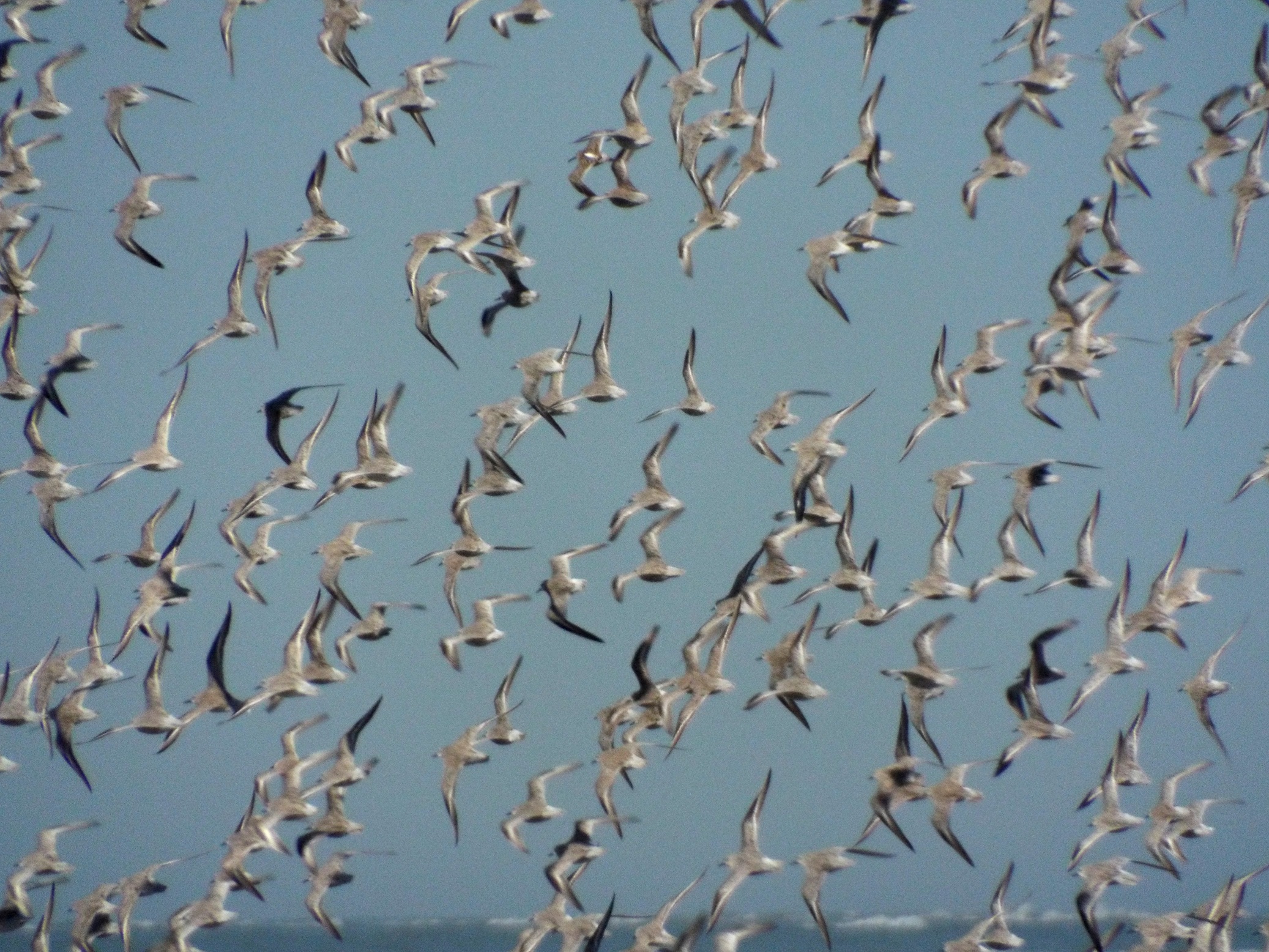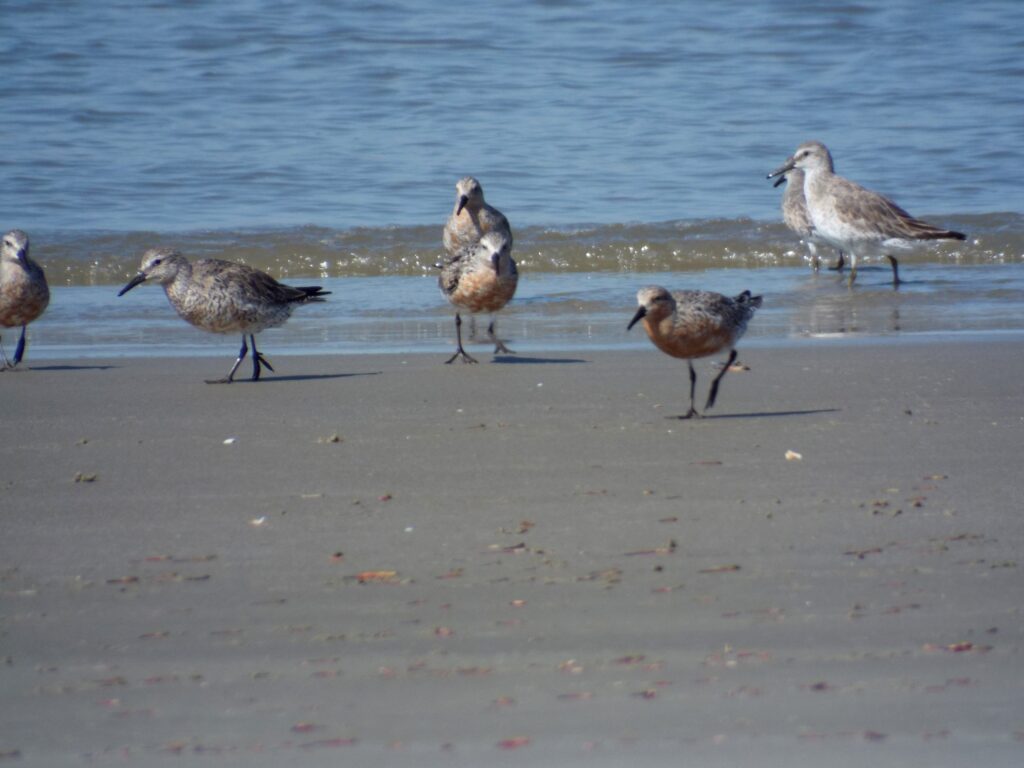



This week for Flora and Fauna Friday we have a ruddy little shorebird with a taste for roe and a pension for long-distance travel: the Red Knot (Calidris canutus).
The Red Knot is a smaller shorebird but the largest member of the Peep Sandpipers, genus Calidris, found in the United States. They measure out at about nine inches long with a compact build. In winter they’re among our drabbest shorebirds. Their beach-sand-gray back and surf-foam-white belly blends them in perfectly to their surroundings. Yet, a medium length bill that’s not too long but not too short, a white stripe above the eye, legs an unappetizing shade of green-yellow, and their intermediate stature make them an easy ID even during this bleakest season. When spring springs and summer creeps closer they begin to molt into their breeding plumage. The washed-out feathers of winter are slowly shed to make way for a blouse of ruddy threads. Like an unsupervised toddler on an April-shower slickened piedmont farm, these birds show up stained from nostrils to nethers in a deep rust-red attire. Knots are rarely seen alone and can be found in flocks of hundreds to thousands as they move through Edisto each spring.
Red Knots are a strongly migratory and cosmopolitan species, meaning they’re found across the globe. There are a half dozen subspecies of Red Knot that each have their own unique breeding grounds, flyways, and summer ranges. All Red Knots breed in the Arctic Circle but not all winter at the same latitude. The subspecies found in South Carolina, Calidris canutus rufa, boasts one of the most impressive round-trips of any bird. Birds will winter in Tierra del Fuego at the tip of South America and breed in the northeast corner of Canada and Greenland! As the birds funnel up the coast, with their sights set on Canada, they must feed continuously to survive the journey. Here on the Atlantic coast, a critical component of their diet is Horseshoe Crab eggs. Horseshoe Crabs spawn on the beach in spring, just before the arrival of the Red Knots. Knots scarf up as much of this crabby caviar as they can as they hopscotch up the coastline. It’s important to remember to leave migratory shorebirds, like Red Knots, alone and give them some space when you’re on the beach. They were recently listed as federally threatened. This was due to ever increasing loses of feeding and resting habitat along their migration route. Migration is a critical time for them each year and, with how few undeveloped beaches are left on our coast, they need all the rest and relaxation they can get.
When they arrive in Canada, Knots pair up, hatch some eggs, and then vamoose as soon as their chicks fledge. Interestingly, recent research in the Southeast shows that our local Knots are not as athletically inclined as the others. Historically, ornithologists thought that all Knots wintered in South America and passed through Delaware Bay on their northward flight. However, it turns out a decent number gorge themselves on South Carolina beaches before flying over the Appalachians to hop the Canadian border. Then, each winter, about 1500 Red Knots snowbird in South Carolina. Here they dine on small clams and other critters over winter until the horseshoe crabs arrive. We also have a contingent of immature birds who get cold feet their first year and end up spending the summer on the Southeast coast instead of heading to the breeding grounds. So Red Knots can actually be seen on Edisto Island almost any day of the year!